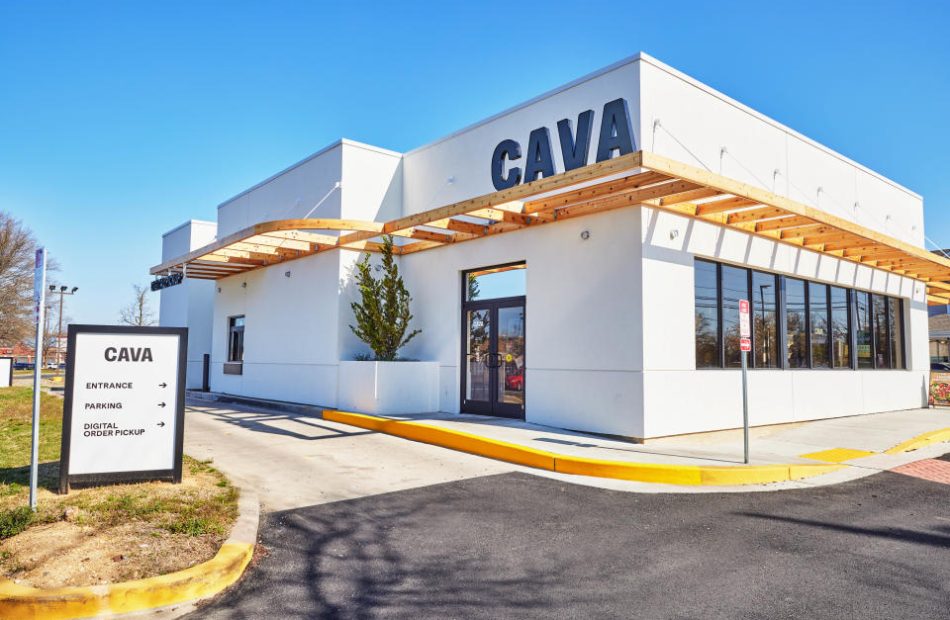Why Charles Schwab Stock Got Socked on Thursday
Charles Schwab (NYSE: SCHW) saw a dip in its share price on Thursday due to events outside the company’s control. That’s because the top news item for the brokerage was that a major shareholder unloaded some of its Schwab holdings at a discount.
Schwab’s stock price sagged in sympathy. By the end of the trading session, the company’s shares had lost 0.5% of their value. That compared favorably, but only just, with the S&P 500 index’s 0.8% decline on the day.
Brokerage for sale, cheap
Within its fiscal third quarter of fiscal 2024 earnings report, Canada-based Toronto-Dominion Bank (NYSE: TD) divulged that it sold 40.5 million shares of Schwab’s common stock. It earned roughly $2.5 billion on the sale, putting the average share price at $61.73. That’s notably under the brokerage’s most recent closing price of $64.27 per share.
The move was part of an attempt to shore up the lender’s finances. For the quarter, it booked a 2.6 billion Canadian dollar ($1.9 billion) provision to pay fines that are expected to be handed down by the U.S. Department of Justice (DoJ). That agency is currently in the midst of a probe into the bank‘s anti-money laundering (AML) efforts.
The share sale reduces Toronto-Dominion’s stake in Schwab to slightly over 10%. Before the divestment, that figure stood at 12.3%.
Already not in the market’s good graces
Although extenuating circumstances were the driving force behind Toronto-Dominion’s divestment, investors have generally been cold on Schwab lately. Earlier this summer, the company said it was slimming down its banking operations, and some market players weren’t too happy about that strategy. Meanwhile, its second-quarter earnings featured a headline net income number that barely budged from the year-ago figure.
Should you invest $1,000 in Charles Schwab right now?
Before you buy stock in Charles Schwab, consider this:
The Motley Fool Stock Advisor analyst team just identified what they believe are the 10 best stocks for investors to buy now… and Charles Schwab wasn’t one of them. The 10 stocks that made the cut could produce monster returns in the coming years.
Consider when Nvidia made this list on April 15, 2005… if you invested $1,000 at the time of our recommendation, you’d have $787,394!*
Stock Advisor provides investors with an easy-to-follow blueprint for success, including guidance on building a portfolio, regular updates from analysts, and two new stock picks each month. The Stock Advisor service has more than quadrupled the return of S&P 500 since 2002*.
*Stock Advisor returns as of August 22, 2024
Charles Schwab is an advertising partner of The Ascent, a Motley Fool company. Eric Volkman has positions in Charles Schwab. The Motley Fool has positions in and recommends Charles Schwab. The Motley Fool recommends the following options: short September 2024 $77.50 calls on Charles Schwab. The Motley Fool has a disclosure policy.
Why Charles Schwab Stock Got Socked on Thursday was originally published by The Motley Fool
2 Stock-Split Stocks to Buy Before They Soar 47% and 57%, According to Certain Wall Street Analysts
Smart investors pay attention to stock splits because they are often an indirect indicator of quality businesses. To elaborate, forward stock splits are only necessary after substantial and sustained share price appreciation, and that rarely happens to mediocre businesses.
Not surprisingly, stocks that split tend to beat the S&P 500 (SNPINDEX: ^GSPC), at least temporarily, according to Bank of America. Since 1980, stocks have generated an average return of 25% during the one-year period following a stock split announcement, while the S&P 500 returned 12% during the same period.
This year, Walmart (NYSE: WMT) announced a 3-for-1 stock split on Jan. 30, and completed the split after market close on Feb. 23. Shares have surged 35% since the announcement, but Simeon Gutman at Morgan Stanley has set a bull-case target of $109 per share. That forecast implies 47% upside from its current share price of $74.
Similarly, Nvidia (NASDAQ: NVDA) announced a 10-for-1 stock split on May 22, and completed the split after market close on June 7. Shares have surged 34% since the announcement, but Rosenblatt analyst Hans Mosesmann has set a target of $200 per share. That forecast implies 57% upside from its current share price of $127.
Here’s what investors should know about Walmart and Nvidia.
1. Walmart
Walmart is the largest retailer in the world and the second-largest e-commerce business in the United States. That scale affords the company an important cost advantage. It can buy inventory from suppliers in bulk and pass savings to consumers. In turn, Walmart can sell a wide assortment of products at low prices, including perishable groceries that online retailers typically lack.
The promise of bargain prices across a broad range of goods brings consumers to Walmart more frequently than any other superstore. The company accounted for 62% of superstore visits during the first four months of 2024, according to Placer.ai. That consistent foot traffic reinforces the ubiquity of the Walmart brand, keeping the company top of mind for consumers.
Walmart reported encouraging financial results in the second quarter. Revenue increased 4.8% to $169 billion on particularly strong sales growth in e-commerce, membership fees, and advertising. Meanwhile, gross profit margin expanded 43 basis points because of pricing power, lower delivery costs per order, and a sales mix shift toward more profitable products like advertising services. In turn, non-GAAP net income increased 10% to $0.67 per diluted share.
CEO Doug McMillon said, “Each part of our business is growing — store and club sales are up, e-commerce is compounding as we layer on pickup and even faster growth in delivery as our speed improves.” He also said new businesses like advertising, memberships, and the online marketplace for third-party merchants are “diversifying profits and reinforcing the resilience of our business model.”
Going forward, Wall Street expects adjusted earnings to grow at 10% annually through fiscal 2027 (ends January 2027). That consensus estimate makes the current valuation of 31 times earnings look expensive, which makes the 47% return implied by Morgan Stanley’s bull-case price target seem unlikely. Personally, I would keep Walmart on my watchlist until shares look a little cheaper.
2. Nvidia
Nvidia accounted for 98% of data center graphics processing unit (GPU) shipments last year, and its market share was similar in the previous year. GPUs can perform technical calculations more quickly and efficiently than central processing units (CPUs), which makes them good at accelerating demanding workloads like rendering 3D graphics, training machine learning models, and running artificial intelligence (AI) applications.
Nvidia’s long-standing dominance in data center GPUs means the company was perfectly positioned to benefit when ChatGPT launched in 2022, eliciting an exponential increase in demand for AI infrastructure. Nvidia holds over 80% market share in AI chips, and Forrester Research recently wrote, “Nvidia sets the pace for AI infrastructure worldwide. Without Nvidia GPUs, modern AI wouldn’t be possible.”
Nvidia reported first-quarter financial results that beat expectations on the top and bottom lines. Revenue surged 262% to $26 billion on momentum in the data center segment. That was fueled by “strong and accelerating demand for generative AI training and inference on the Hopper platform,” according to CEO Jensen Huang. Meanwhile, non-GAAP net income jump 461% to $6.12 per diluted share.
Investors should know that shipments of Nvidia Blackwell GPUs — chips that offer faster training and inference speeds than the previous Hopper architecture — will be delayed by three months. Technology-focused news company The Information broke the story earlier this month, citing design flaws discovered “unusually late in the production process” as the reason for the delay.
Management will likely address the issue when the company announces second-quarter financial results on Aug. 28. The stock could move sharply in either direction depending on the context, so shareholders should be ready. That said, the long-term investment thesis remains intact. Nvidia GPUs are the industry standard in AI computing, and the graphics processor market is forecasted to grow at 28% annually through 2030, according to Grand View Research.
Wall Street expects Nvidia’s adjusted earnings to grow at 39% annually through fiscal 2027 (ends January 2027). In that context, the current valuation of 71 times adjusted earnings looks a little expensive, so I doubt Nvidia will return 57% in the next 12 months. However, I think investors can buy a small position in the stock today, provided they are comfortable with the possibility of a significant decline post earnings.
Should you invest $1,000 in Nvidia right now?
Before you buy stock in Nvidia, consider this:
The Motley Fool Stock Advisor analyst team just identified what they believe are the 10 best stocks for investors to buy now… and Nvidia wasn’t one of them. The 10 stocks that made the cut could produce monster returns in the coming years.
Consider when Nvidia made this list on April 15, 2005… if you invested $1,000 at the time of our recommendation, you’d have $779,735!*
Stock Advisor provides investors with an easy-to-follow blueprint for success, including guidance on building a portfolio, regular updates from analysts, and two new stock picks each month. The Stock Advisor service has more than quadrupled the return of S&P 500 since 2002*.
*Stock Advisor returns as of August 12, 2024
Bank of America is an advertising partner of The Ascent, a Motley Fool company. Trevor Jennewine has positions in Nvidia. The Motley Fool has positions in and recommends Bank of America, Nvidia, and Walmart. The Motley Fool has a disclosure policy.
2 Stock-Split Stocks to Buy Before They Soar 47% and 57%, According to Certain Wall Street Analysts was originally published by The Motley Fool
5 Enjoyable Retirement Hobbies That Won't Drain Your Wallet
Retirement marks one of the great transitions in your life. For most people, until your late-teens or early-twenties you define your time by going to school. After that your schedule is shaped around the need to work and earn a living. Retirement is the third stage. Nobody has assigned you to a classroom and no outside forces (whether boss, customers or growing seasons) have fixed you with a schedule. You get to decide what to do with your time.
You can do great things in your retirement, but first you’ll need to figure out what you want to get out of this phase of your life. To help you figure that out, here are a few places to start. For help getting ready for retirement or managing your money as you get older, consider working with a financial advisor.
Writing, Photography and Art
A lot of people have an inner artist that they’ve never set loose. Whether you want to write a memoir, a history or a novel, you’re not alone. The same is true for if you have paintings inside of you, or sculptures. Or if you’ve always wanted to pick up a camera and figure out exactly how to make the most of ISO and aperture.
All of this takes time, and perhaps you’ve never had it before. Now, you do.
For retirees, now is the time to get serious about that inner artist. Maybe you want to actually pitch your manuscripts. Maybe you want to start a website or an Instagram to publish your visual works and photography. Maybe you don’t want any of that and are seeking the simple pleasure of creating something that makes you happy — not everything has to be for material gain, after all.
No matter what you’re looking for, you have the time and opportunity to turn this from an idle idea into something real. However you define that.
If you’re ready to be matched with local advisors that can help you achieve your financial goals, get started now.
Education
For many retirees, going back to school is a very popular option. You can pick up subjects that you never learned before, things that were always fascinating but you never had the time. Making this even better, most universities have no- or low-cost options such as auditing for students who just want the education and aren’t seeking a degree.
And if you like the social and campus environment of a school, but aren’t interested in taking any more exams, perhaps now’s a good time to consider giving the tests instead. You have an entire career’s worth of expertise under your belt. Look into teaching a few courses at your local community college, or mentoring students who need extra help in your field.
It can be the perfect combination of purpose and time commitment.
Travel
Perhaps the single most popular answer for “what to do in retirement” is travel. That doesn’t make it wrong, though, or any less exciting.
If your retirement savings went well, this is when you can have the best intersection of time and money. In your youth, you had plenty of time but no money to afford those big adventures. In your working years, you may have had the money but much less time. Now, for many people, you have both. Compounding all of that is the reality of health in retirement. Today’s retirees are healthier and stronger than ever.
So make the most of it. Take trips both big and small. In particular, embrace the advantages of your situation. You have complete control of your own schedule, so plan spontaneous trips as the mood strikes you. Jump in the car on a random morning and take a road trip to see new cities. Call a couple of hotels on the way. Save some money by heading out on a Tuesday, when rates are low.
Or go the opposite direction. Plan a three month trip to parts of the world you ordinarily couldn’t see. Traveling around Indonesia can take days at a time just to get from one island to the next, for example. That’s a hassle for someone burning their way through vacation time, but much less so for a retiree with a wide open schedule and no rush to get home.
Traveling in retirement is indeed a popular hobby, but don’t just travel. Take advantage of your schedule to do things you otherwise couldn’t.
Athletics
It goes without saying by now that pickleball has taken off for many people, especially retirees. Maybe you love the idea of trying out this hot kinda-new game. Maybe you don’t.
But let’s take it back to first principles.
Picking up a sport in retirement is a fantastic idea. Sports are fun, social events. They get you out and exercising, and a lot of people love the competition. This is a good idea all around. The key is to pick a sport that works for you. After all, arguably the single most defining part of retirement is that you are getting older, which makes physical activity that much harder.
So look at what makes pickleball such a good fit. It is:
-
Social
-
Low-impact
-
Low-commitment
Sports are a great option for a hobby in retirement. If you aren’t sure what to pick up, this is a great profile to start with. Pick a sport that doesn’t need a lot of training, equipment or experience to enjoy. Be mindful of any sports that will stress trouble spots like your joints or back; the sweet spot is something that has you breaking a sweat without causing pain. And make it something social, so that you can have a good time playing.
Coding
Generation X will hit their 60s soon enough, and they like their tech.
Your retirement is a great time to pick up new things and new ideas, and in the 21st Century one of the best ways to express a new idea is through code. Whether you want to build an app, a website or a full program, this can be the perfect hobby for a retiree who wants to transition into something new.
Have you ever wanted to create a video game? Now you can. Was there something in your work life that always seemed like it could be done better? Get around to fixing that problem. Do you just want to pull up Atom and see what happens? Go for it.
Coding offers the combination of education and expression, letting you learn something new while creating at the same time. As far as hobbies go, you can’t get much better than that.
The Bottom Line
How you finance your retirement is an essential question for your working life. How you use that retirement is arguably the defining question of your retired life. Here are five ideas to get you started.
Retirement Planning Tips
-
Nothing here jumping out at you? Don’t worry, there are more options.
-
A financial advisor can help you get set up for a fun retirement. Finding a financial advisor doesn’t have to be hard. SmartAsset’s free tool matches you with up to three vetted financial advisors who serve your area, and you can interview your advisor matches at no cost to decide which one is right for you. If you’re ready to find an advisor who can help you achieve your financial goals, get started now.
-
Keep an emergency fund on hand in case you run into unexpected expenses. An emergency fund should be liquid — in an account that isn’t at risk of significant fluctuation like the stock market. The tradeoff is that the value of liquid cash can be eroded by inflation. But a high-interest account allows you to earn compound interest. Compare savings accounts from these banks.
-
Are you a financial advisor looking to grow your business? SmartAsset AMP helps advisors connect with leads and offers marketing automation solutions so you can spend more time making conversions. Learn more about SmartAsset AMP.
Photo credit: ©iStock.com/Drazen Zigic, ©iStock.com/BraunS, ©iStock.com/RichLegg
The post Five Fun Hobbies to Take Up in Retirement appeared first on SmartAsset Blog.
This is a fair price range for Nvidia stock according to these analysts
Nvidia (NASDAQ:NVDA) continues to be one of the most demanded stocks in the tech sector, with Itau BBA analysts offering a detailed assessment of its prospects and a fair price range for the semiconductor company’s shares.
The analysts recently reviewed several factors impacting Nvidia, including delays in the Blackwell chip and potential concerns around capital expenditure (capex) overbuild by major tech companies.
Despite these challenges, Itau BBA expresses increasing confidence in Nvidia’s earnings performance for the next two to three quarters.
They believe that the Blackwell delay, contrary to popular opinion, may actually serve as a tailwind for short-term numbers, particularly with the H200 chip proving more accretive than the B100 or B200 models.
However, the analysts also highlight potential risks to Nvidia’s implied growth in calendar year 2026 (CY26). “To command a 30x P/E CY25, we believe that NVDA should have a CY26 EPS growth of at least 20%,” writes Itau BBA.
A capex exercise based on Microsoft (NASDAQ:MSFT)’s spending suggests that if Nvidia continues to grow at these levels, Microsoft’s capex could reach 100% of its cash flow from operations or EBIT by FY26, raising concerns about sustainability.
To alleviate these concerns, the analysts point to the importance of faster AI adoption. They cite Microsoft’s bullish tone in a recent earnings call, where a mass rollout of M365 Copilot was highlighted as a potential driver for increased AI infrastructure investment, which could benefit Nvidia.
“All-in, we continue to see NVDA delivering a USD5-6 EPS in CY25. However, we believe that we could see a semi infrastructure digestion at some point in CY26, adds the firm.
Itau BBA currently maintains its Outperform rating on the stock, explaining that its EPS projection could result in a fair price range of $150 to $180 a share for NVDA (based on a 30x P/E ratio).
Related Articles
This is a fair price range for Nvidia stock according to these analysts
Analyst Report: Clorox Co.
Summary
Clorox manufactures and markets a wide array of consumer products ranging from bleach to cat litter to Hidden Valley Ranch dressing. The company’s operations are divided into four operating segments: Health and Wellness, Household, Lifestyle, and International. The company has approximately 8,000 employees. CLX shares are part of the S&P 500 and the S&P Div
Upgrade to begin using premium research reports and get so much more.
Exclusive reports, detailed company profiles, and best-in-class trade insights to take your portfolio to the next level
Bennifer's House Is On Zillow: Guess The Taxes J Lo, Ben Affleck Paid On Their Up-For-Sale California Home
Benzinga and Yahoo Finance LLC may earn commission or revenue on some items through the links below.
Jennifer Lopez officially filed for divorce from Ben Affleck, ending the Hollywood relationship after two years of marriage. The couple has also put their former home, a 38,000-square-foot mansion in Beverley Hills, up for sale.
Trending Now:
And while red-carpet superstars don’t look like us, eat like us or dress like us, they do sell their homes the same way we do—by listing it on Zillow. Zillow Group (NASDAQ:Z)(NASDAQ:ZG) has the property listed for $68 million, around $7 million more than the house was bought for in 2023.
The house comes with a large pool, and an even larger tax bill. Zillow shows that the California property tax for the house was more than $400,000 last year, a little higher than 1% of the home’s assessed value.
And despite California’s reputation for high taxes, the state’s property tax rate is actually lower than most other states, according to Bankrate. If Bennifer’s house were located in Connecticut, for example, the property tax would be around $800,000.
In addition to the pool, the house features an indoor pickleball/basketball court, 12 bedrooms and 24 bathrooms. The house also has a fitness center and gym, a rooftop patio on the second floor and more.
Don’t miss the real AI boom – here’s how to use just $10 to invest in high growth private tech companies.
This is a paid advertisement. Carefully consider the investment objectives, risks, charges and expenses of the Fundrise Innovation Fund before investing. This and other information can be found in the Fund’s prospectus. Read them carefully before investing.
You Can Profit From Real Estate Without Owning Property
The current high-interest-rate environment has created an incredible opportunity for income-seeking investors to earn massive yields and you don’t have to own property to do it…
The Arrived Homes investment platform has created a Private Credit Fund, which provides access to a pool of short-term loans backed by residential real estate with a target 7% to 9% net annual yield paid to investors monthly. The best part? Unlike other private credit funds, this one has a minimum investment of only $100.
Don’t miss out on this opportunity to take advantage of high-yield investments while rates are high. Check out Benzinga’s favorite high-yield offerings.
This article Bennifer’s House Is On Zillow: Guess The Taxes J Lo, Ben Affleck Paid On Their Up-For-Sale California Home originally appeared on Benzinga.com
An oil tycoon sold his company for $26 billion this year — but died before the deal closed
-
Autry Stephens agreed to sell his company for $26 billion in cash and stock in February.
-
The oil tycoon was set to become one of the world’s 100 richest people, but he died this month.
-
Stephens wasn’t fussed about lavish living, and his family will still profit if the deal closes.
Autry Stephens struck a deal in February that would have made him America’s richest oilman and one of the world’s 100 wealthiest people — but he died before it closed.
The founder and owner of Endeavor Energy Resources agreed to sell the Texas oil producer to Diamondback Energy for $26 billion this spring. A cancer diagnosis spurred his decision to cash out, he told The Wall Street Journal at the time. Stephens was 86 when he died last week.
The planned merger, still expected to close in the fourth quarter, has added $17.5 billion to Stephens’ net worth this year, according to the Bloomberg Billionaires Index. The late entrepreneur’s fortune has nearly quadrupled since January from about $6 billion to $23.4 billion, placing him 85th on the list.
Only 14 people on Bloomberg’s rich list have made more money this year, and none of them rank lower than 18th. Stephens has even outpaced the world’s richest person, Elon Musk (up $15.1 billion), as well as the likes of former Microsoft CEO Steve Ballmer (up $16.3 billion) and Asia’s richest person, Mukesh Ambani (up $16.4 billion).
Stephens’ immediate family members are the sole owners of Endeavor following his demise, according to Bloomberg. They’re poised to receive the $8 billion in cash and 117.3 million Diamondback shares from the deal in his stead. The stake was worth about $17 billion just before the tie-up was announced and is now valued at $22 billion because of Diamondback’s rising stock price.
Stephens may have decided that, given his ill health and the lack of an obvious heir to take over the family business, it was best to secure his family’s future.
The oil tycoon was still a multibillionaire when he died, but he appears to have shared the investor Warren Buffett’s taste for a simple life.
Stephens grew up on a peanut and watermelon farm, drove a beaten-up Toyota Land Cruiser, and eschewed private jets for cheap flights with Southwest Airlines, the Journal reported.
Read the original article on Business Insider
Forget ExxonMobil: Buy This High-Yield Dividend Stock Instead
ExxonMobil (NYSE: XOM) is a fine and worthy dividend-stock candidate for investors looking for exposure to oil, but it doesn’t trade at Devon Energy‘s (NYSE: DVN) cash-flow valuation. Moreover, while ExxonMobil’s stock is up almost 19% this year, Devon’s stock is flat this year and presents an excellent value for investors. Here’s why.
Devon Energy continues to progress
Devon Energy’s recent second-quarter results contained several positives that helped confirm the investment case for the stock, including the company’s upgraded production target. In a year when management decided to focus investment in its core assets in the Delaware Basin, it’s reasonable to expect an improvement in well productivity and total production. Indeed, management started the year predicting a 10% improvement in well productivity and the production of 650,000 barrels of oil equivalent per day (Boe/d) in 2024.
The good news is that management reaffirmed the target for well-productivity improvement and, for the second time this year, upgraded its full-year production target to a new range of 677,000 Boe/d to 688,000 Boe/d — a 5% upgrade from the original target. It’s an even better result when considering that the price of oil started the year at around $70 a barrel but has spent most of it above $75 a barrel.
Cash-flow valuation
As noted above, Devon Energy trades at a more attractive valuation than many other oil stocks. For example, Wall Street analysts expect ExxonMobil to generate $34.7 billion in free cash flow (FCF) in 2024. Based on ExxonMobil’s current market cap of $527.5 billion, that FCF is equivalent to 6.6% of the company’s market cap.
It’s an attractive cash-flow yield, but Devon’s is even higher. Based on the company’s market cap of around $26.8 billion at the time of the results, Devon’s management believes it will trade at a 9% FCF yield at a price of oil of $70 a barrel in 2024, 11% at $80 a barrel, and 13% at $90 a barrel. Looking at the current market cap puts these figures at roughly 8.5% at $79 a barrel, 10.3% at $80 a barrel, and 12.2% at $90 a barrel.
With the current price of oil at $76 a barrel, Devon clearly trades at a very attractive FCF valuation.
An acquisition isn’t in the numbers
Devon’s management expects to complete the acquisition of the Williston Basin business of Grayson Mill Energy for $5 billion ($3.25 billion in cash and $1.75 billion in stock) by the end of the third quarter. Investors should note that neither the upgraded production forecast nor the FCF yield calculations assume any contribution from this acquisition in 2024.
Capital-allocation policy
Devon Energy’s capital allocation policy targets using 30% of FCF to support the balance sheet, partly in connection with the acquisition. (Devon will initiate a $2.5 billion debt-reduction program.) The remaining 70% will be used for share repurchases, a quarterly fixed dividend of $0.22 per share, and a variable dividend.
The total dividend in the first quarter was $0.35 per share, and $0.44 per share in the second quarter, with management prioritizing share repurchases over the variable dividend. While some investors may not like that, it reduces shares in issue and increases the claim of existing shareholders on future cash flow.
Putting things into perspective, the abovementioned FCF yields make it clear that Devon could potentially pay significantly higher dividends if it so desired. However, the idea of investing in a company is that management can generate better returns on investment than an investor can, so it makes sense to let them do that by retaining cash to add value.
A stock to buy
Devon’s FCF generation (which will be boosted by the acquisition in the third quarter) and its policy of returning cash to shareholders in the form of share buybacks and dividends ensures that investors can look forward to significant returns from Devon in the coming years, provided the price of oil stays relatively high.
Should you invest $1,000 in Devon Energy right now?
Before you buy stock in Devon Energy, consider this:
The Motley Fool Stock Advisor analyst team just identified what they believe are the 10 best stocks for investors to buy now… and Devon Energy wasn’t one of them. The 10 stocks that made the cut could produce monster returns in the coming years.
Consider when Nvidia made this list on April 15, 2005… if you invested $1,000 at the time of our recommendation, you’d have $779,735!*
Stock Advisor provides investors with an easy-to-follow blueprint for success, including guidance on building a portfolio, regular updates from analysts, and two new stock picks each month. The Stock Advisor service has more than quadrupled the return of S&P 500 since 2002*.
*Stock Advisor returns as of August 12, 2024
Lee Samaha has no position in any of the stocks mentioned. The Motley Fool has no position in any of the stocks mentioned. The Motley Fool has a disclosure policy.
Forget ExxonMobil: Buy This High-Yield Dividend Stock Instead was originally published by The Motley Fool
Cava beats estimates across the board, raises outlook as stock reaches all-time high
Cava (CAVA) is serving up some savory numbers for its investors.
After the market close on Thursday, the Mediterranean fast-casual chain reported second quarter results that beat estimates across revenue, earnings, and same-store sales.
Net sales jumped 35.2% year over year to $233.5 million, compared to expectations of $219 million. Adjusted earnings per share came in at $0.17, versus the $0.13 expected.
Same-store sales jumped 14.4%, more than the 7.45% Wall Street expected. Sales growth was driven by higher foot traffic (up 9.5% year over year), an increase in menu price, new locations, and the launch of grilled steak on June 3.
CEO Brett Schulman said on the earnings call that the steak launch surpassed its expectations by a landslide. The company is at the “nexus of consumer convergence” as consumers trade down from fine-dining restaurants but trade up from fast food.
“At a time when consumers are increasingly feeling the pressure of an uncertain economy and are more discerning about where and how they spend their money, they are choosing to dine at Cava,” he said.
Wedbush analyst Nick Setyan said it expects “accelerating two-year transaction trends, led most importantly by the launch of steak.”
On Wednesday, Cava stock hit a record-high close of $102.39, and on Thursday, it hit an intraday high of $104.84. In after-hours trading, shares jumped to as much as $112.
Shares are up 137% year to date, compared to 17% for both Chipotle (CMG) and the S&P 500 (^GSPC).
Slow and steady is Cava’s go-to approach to expansion. By 2032, the company plans to have 1,000 Cava locations.
Citi analyst Jon Tower said there’s still room left for growth in a note to clients. “A unit growth opportunity that continues to re-set higher, discrete same-store sales, price, and margin opportunities as the system densifies and margin tailwinds as the footprint shifts towards lower cost markets.”
In Q2, Cava opened 18 new locations, bringing the total to 341. That’s compared to 14 new locations in Q1.
Schulman said within existing markets, there is still runway to build more brand awareness. Other future growth drivers include the relaunch of its loyalty program in October and catering.
The company aims to market test catering in major metros in 2025 and launch it on a national scale in 2026.
It currently has 10 digital kitchen hubs and 10 hybrid kitchen hubs in various locations, as well as regular Cava locations that are testing catering.
Cava continues to perform at a time when fast-casual dining seems to be bucking a broader slowdown across the food industry as consumers double down on value.
“Cava was one of just a handful of publicly traded restaurant brands with positive traffic growth in the second quarter,” Schulman said. “We believe our performance is a reflection of our unique and compelling value proposition.”
He added that from 2019 to 2023, the company raised prices 12%. He emphasized that’s less than fast food price increases and grocery price increases overall, per CPI data.
“Now you’ve got a situation where for $1 or $2 more … you can get a bowl of fresh Mediterranean food for the same price as a traditional fast food freezer-to-fryer meal,” he said.
Chipotle blew past expectations in its report after same-store sales jumped 11.1% year over year, versus the 9.23% Wall Street anticipated. Shake Shack (SHAK) saw same-store sales climb 4%, beating estimates of 3.2%.
Sweetgreen (SG) reported its best same-store sales growth in two years, up 9%, driven by higher foot traffic and prices.
Its CEO, Jonathan Neman, told Yahoo Finance that “we’re going to be very judicious in how we use it [pricing power].” Neman claimed the chain took fewer price hikes than its rivals since the pandemic.
“As you look at the relative pricing difference between Sweetgreen, some of our fast-casual competitors and then QSR, the gap has really narrowed. QSR, you can’t get in and out of there for under $15 today,” he told Yahoo Finance.
Here’s what Cava reported, compared to Wall Street estimates, per Bloomberg consensus data:
-
Revenue: $233.5 million versus $219.5 million
-
Adjusted earnings per share: $0.17 versus $0.13
-
Same-store sales growth: 14.4% versus 7.45%
The company raised its fiscal 2024 outlook for restaurant openings, sales growth, and restaurant-level profit margin.
It now expects sales growth of 8.5% to 9.5%, up from 4.5% to 6.5% in Q1 and its previous guidance of 3% to 5%.
The total number of new restaurants will now be between 54 and 57, up from 50 to 54. The restaurant-level profit margin is expected to be between 24.2% and 24.7%, up from 23.7% to 24.3%.
—
Brooke DiPalma is a senior reporter for Yahoo Finance. Follow her on X at @BrookeDiPalma or email her at bdipalma@yahoofinance.com.
Nvidia’s Jensen Huang sells $14 million in stock almost daily—raising questions about his successor
Five years ago Nvidia CEO Jensen Huang was worth a respectable $3.73 billion. At the time of writing, his net worth has ballooned to a little over $92 billion—and even then it’s down from its high of $119 billion earlier this summer.
While Huang has worked on Nvidia for more than three decades, it has only been over the past 12 months or so that the chipmaker’s stock price has really begun to take off, and with that comes scrutiny.
Investors are largely thrilled with their bet on the Santa Clara, Calif., business, and the man Mark Zuckerberg dubbed the “Taylor Swift of tech.”
But Nvidia’s meteoric growth has led some experts to question whether the company’s corporate governance has matured as quickly.
They point to the fact that CEO Huang has been off-loading approximately $14 million worth of shares on a near-daily basis for months this summer. He still retains more than a 3.5% stake in the business.
This, inevitably, raises questions about why Huang is selling instead of holding.
And that, in turn, leads to the issue of why Huang has so many shares in the first place, and whether his compensation package incentivizes the performance shareholders want to see.
Investors want more intel on the business at the top. They want to see more transparent corporate governance, open succession planning, and a change in pay structure to motivate the next era of management, according to executive compensation experts who spoke to Fortune.
‘Huang selling shares doesn’t look good’
Huang is selling his shares under a very specific plan—a Rule 10b5-1 agreement—which allows executives and employees to buy or sell stock in their own company without violating insider trading laws by using a predetermined schedule.
Rule 10b5-1 has a number of specific requirements, chief among them that a formula for the sales (not an individual) be used to determine the number, price, and date of the trade. A third party must also be employed to conduct the sales, who cannot be influenced by the client.
So while Huang is comfortably removed from any concerns about insider selling, the fact still remains that he is choosing to sell after a period of high share performance and then a dip.
This, according to Nell Minow, vice chair of corporate governance specialists ValueEdge Advisors, is not a good look.
Minow, who also owns shares in Nvidia herself, explained to Fortune: “What I want from an executive [is] to be very bullish on the stock. I want the executive to be thinking all the time: ‘Boy, this is really going to be worth a lot more soon’ and not, ‘Oof, I better sell some because I’m … experiencing the vertigo of having all my eggs in one basket.’
“I want all of their eggs in one basket.”
This year isn’t the first time Huang has employed a Rule 10b5-1—though it is a more tenacious selloff than previous trades.
In September last year, for example, Huang off-loaded 237,500 shares valued at just over $117 million under a 10b5-1 trading agreement. This year, by comparison, Huang sold $323 million in Nvidia stock in July alone.
Huang wasn’t the only Nvidia exec to confirm a Rule 10b5-1 trading agreement in the April filing.
Debora Shoquist, executive vice president of operations; Colette M. Kress, executive vice president and CFO; and Ajay K. Puri, executive vice president of worldwide field operations, disclosed similar plans.
“It signals that the stock has jumped tremendously and they’re getting a little nervous about it,” Minow believes. “It’s certainly concerning for investors; we ask ourselves: ‘Well, maybe I should be selling mine, too. What are they telling me? If they don’t have the confidence in the stock, then why should I?’”
Fortune approached Nvidia for comment on how many shares in total Huang plans to off-load, and when his selloff will end. The company did not respond to the question.
Nvidia told Fortune: “Mr. Huang’s sales are based on a 10b5-1 plan, in which the price, amount, and dates of the sales are established in advance.”
Calming the ripple effect
James Reda is a managing director at Chicago-based consultancy Gallagher’s HR and compensation practice. He has worked on a number of high-profile compensation cases, from Howard Schultz at Starbucks in the early 2000s to advising on Satya Nadella’s Microsoft package.
Why is Huang drip-feeding the sale of his stock, day after day, as opposed to off-loading larger sums all at once, we asked him.
“If you just dump that in the market the stock’s going to go down,” Reda told Fortune. “So you have to be very sensitive about it … If you have a large position that some of these founders and CEOs have, it could be a better strategy.
“I’ve seen a lot of cases where things are executed improperly and the stock tanks. Not because people think something’s going on, and all that stuff, but the excess supply. The market’s confused about what they do with it.”
The fact that Huang is selling on a near-daily basis as opposed to wider intervals is also not a surprise to Reda. The 10b5-1 plan is public, so markets will be aware of the stock influx and won’t be caught off guard.
And while some analysts like Minow want founders to be singularly focused on their own stock, Reda disagrees: “Ultimately, if you don’t sell the stock you’re gonna have to be like Elon Musk and some others that are putting stock up for collateral and getting these humongous loans.
“That just makes everybody more leveraged, why do that? Peel off a little stock on a regular basis and sell it.”
Too much stock?
A look through the SEC filings of every Big Tech company presents a range of often complex compensation provisions. Meta’s Zuckerberg is famously paid a single dollar for his salary but takes $24.4 million in security costs. Apple’s Tim Cook has performance-based restricted stock units in a compensation package worth $49 million. Alphabet’s Sundar Pichai is given a triennial stock grant, which led to a $226 million payday in 2022.
The range of options also reveals a common practice in Silicon Valley: CEOs—particularly founders—are often continually awarded stock not only so they maintain a sense of power over a rapidly expanding empire, but also because it is a tried-and-tested method to motivate those at the top.
Nvidia’s 2024 proxy filing for fiscal year 2024 discloses that Huang was paid a salary of $996,514, with stock awards worth $26 million and additional incentivized cash compensation of $4 million. His total compensation package was worth approximately $34.17 million.
The filing also revealed Huang’s holdings in Nvidia prior to the stock sales beginning this spring, with the figure sitting at more than 93 million shares—3.79% of the business.
This is a sign that Huang has been given too much stock, Minow believes.
In her estimation, Huang’s shares should be locked in “golden handcuffs”—meaning he can’t sell until years after he leaves the business.
“Stop giving him stock. He’s clearly got too much, and that’s why he’s getting rid of it,” Minow said. “The marginal value of additional stock grants is negligible.”
Nvidia has a “pay for performance” strategy, per its SEC filing, based on revenue, operating income, and shareholder returns relative to the S&P 500.
But Minow wants more detail. She said: “I would create very specific goals—and this is the job of the board—around market share, innovation, expansion, improving operations. Whatever the board decides the priorities should be.
“And let the market know what those goals are. That helps us as investors know if it’s something that we want to participate in.”
The succession plan, or lack thereof
The board itself presents further potential for improvement, in Minow’s opinion. Of the 12 individuals on the $2.93 trillion company’s board, only one cites experience in “corporate governance” in their official biography (although some of the others have served on other boards).
Minow also wants to see Nvidia ticking off the corporate to-do list by updating the market on a successor to the CEO. After all, CEOs can’t lead forever.
“His board of directors [is] very strong on technology, not as much on corporate governance,” Minow explains. “I would really like to see them say: ‘We have a process in place to make sure we’re cultivating our top people, making sure we have a deep bench; here’s how we’re going about it.’
“We don’t need a name, but they need to be very forthright about the value that Huang presents and that they’re taking very seriously the idea that he could just decide to go spend his money … They’ve got to be prepared for that.”
Huang, famed for his never-off work schedule and endless pushes for perfectionism, is the beating heart of Nvidia—and he has a price tag attached.
“Huang is the heart and soul of the company; his reputation is almost as important as the quality of the product,” Minow adds. “Particularly when you’re talking about the [15th] richest man in the world—how do you keep him motivated? It’s certainly not by allowing him to diversify his holdings.
“I would give him more of his compensation in cash tied to very specific, quantifiable goals.”
Fortune asked Nvidia what its succession plan was and whether it would be more transparent with shareholders about compensation practices. Nvidia declined to comment.
What does a post-Huang Nvidia look like?
A push for transparency is needed across the market, says Aalap Shah, managing director at compensation and leadership consultancy Pearl Meyer.
Some of the pillars of American commerce have already learned this lesson: Just ask JPMorgan’s Jamie Dimon, who has been open about the banking behemoth’s succession planning process—even naming his “hit-by-a-bus CEO.”
Elsewhere, Morgan Stanley was subject to immense speculation prior to its selection last year of Ted Pick to replace James Gorman.
“We should be significantly more transparent than we are currently about succession planning,” Shah tells Fortune. “From my perspective for an incoming CEO … one of the top five things they should be doing is succession planning. That to me is a company that is truly looking at the future and is appropriately considering corporate governance.
“When succession planning is not transparent and thoughtfully considered you have to make rash decisions, and that, from a shareholder and investor perspective, is what causes volatility.”
This story was originally featured on Fortune.com










